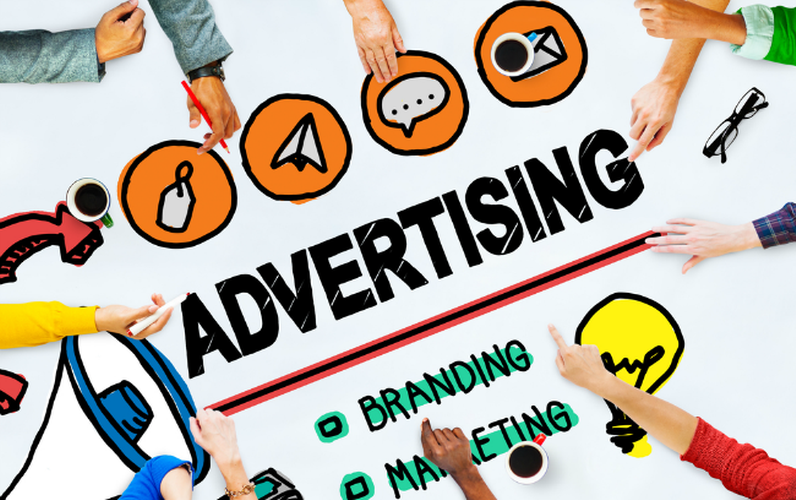At times, the most viable means to reach target audiences is a combination of paid promotion or advertising, strategic publicity and digital marketing, punctuated with engaging copywriting and graphic design. Though, most marketing managers and C-suite leaders agree promoting products, professional services or brands to mass groups of consumers – or to trade professional targets – through paid advertising and content marketing, can seem overwhelming.
We have heard more times than we can count that some marketing communication managers have a love-hate relationship with the advertising and media buying parts of their day-to-day scopes of responsibility. This is hopefully not due to disregard or disdain for the process. Rather, it is likely because of advertising’s various layers of forecasting and numerous rounds of creative and approvals, along with the sometimes-unpredictable pitfalls.
If you are like most marketers, you try to plan your advertising campaigns as succinctly as possible. When executed comprehensively, the process takes time and is many-sided. Only those who have managed media buying and planning inherently know that it is no small feat.
For some, advertising strategies involve tiers of planning that can run a wide gamut, which most often begins with strategic planning, messaging objectives and vetting opportunities. Whether in organized tandem or a get-it-done hustle, this leads to cost negotiations, budgeting overviews, and careful media buying with timely scheduling. Creative, copy and coordination come next, followed by tracking, reporting and the all-important results analytics.
For companies with both business-to-consumer and business-to-business marketing communications needs, the charge to create results-earning advertising campaigns, nearly always with a lesser-than-desired budget, can feel like crossing a chasm. However, advertising planning and media buying can be completely enjoyable and worth the effort when approached with a competitive and industrious mindset.
Understanding media planning and buying.
Media planning and buying involves the art and science of researching, negotiating and scheduling advertising placements. The cause or trigger is known as paid media; the effect is, or always should be, brand awareness that translates to brand equity. Masterful and adept media planning satisfies goals to influence clearly identified audiences, targets, leads, and prospects. Ultimately, advertising-induced visibility for available products or offered professional services acts as a cornerstone of the marketing mix to achieve sales conversions.
Converting leads to sales is, at times, disproportionately thought to be the marketer’s role. Yet, while sales and marketing personnel should be dually tag-teamed for real-time sales growth; undoubtedly, a marketer who oversees media buying and planning has the capacity to conjure customer or client expansion, perhaps, like no one else in an organization.
Assuming you have a solid understanding of the types of advertising options that are possible and necessary for your business – and your messaging strategies and creative concepts are well underway – a key, initial planning factor is budget.
Achieving successful ad campaigns begins and ends with the budget your business or brand can assess and allocate. While cost-effective advertising is extremely possible to conceptualize and implement, a good grasp of what to expect with your marketplace’s ad options is essential. A realistic advertising budget is paramount to carve out a sound messaging and promotional victory.
Again, with the assumption your strategic plan for advertising is in place, move toward a systematic approach of evaluation to find and consider cost-effective media buying. To assemble a collection of cost-effective media buys that also offer potent reach and influence among your targets, you will want to research qualified media outlets and digital platforms.
This does not mean buying an ad in a print magazine or newspaper because you saw that one of your competitors advertises in it. Nor, should you jump on the first or second advertising opportunity that lands in your inbox, even if the offer says you will be missing out if you wait.
Efficacious, profitable advertising is an outcome of a nuts-and-bolts valuation, surrounding qualified and quantified audience reach at the most reasonable cost to do so. There are any number of strategies to accomplish this seemingly far-flung objective.
Starting with a defined advertising budget begets cost-saving measures as you proceed. It is recommended to reach an upfront decision how aggressive your ad plan should be as a piece of your overall marketing communications campaigns.
How to create an advertising budget.
The number one question we are asked about media buying and advertising budgets is, “How much should I spend on advertising for my business?” If nothing else, it is a loaded question. The answer lies in the business’s desire and need to market its products or services, and exactly what are the coming year’s revenue and profit goals.
A conservative ad budget includes a media buying budget of between 1-3 percent of your prior year’s, or forecasted year’s, revenue. By no means is this an ambitious budget, and it may verge on ambiguous. Though, at this budget level, you may keep your head at or just above water’s level in terms of customer retention.
Your company advertising budgets will be fundamental at this level, but you can unify them with synchronized public relations, consistent content marketing and basic Search Engine Optimization to have a perceptible brand voice amid the competition.
Take it up a couple of savvy-marketer notches and consider an ad budget based upon 4-5 percent of last year’s earned revenue, or next year’s anticipated revenue. If you are a seasoned media planner and buyer or your agency specializes in advertising, your percentage allocation should create advertising campaigns that will result in a fair level of customer retention and picking up new customers or clients.
At this tier, we have witnessed MarComm managers get a little too comfortable. Some perilously assume the 4-6 percent ad budget standard has them covered. To avoid this pitfall, ensure your advertising campaigns are one of several messaging formats. Support your paid media with press releases, blogs, social media, digital marketing, product demos, collateral, speaking and virtual events, networking, and the list goes on.
When working to build market share and brand voice, dig deeper into more vigorous forecasting. Budgeting for paid media at 7-10 percent has the likely power to launch your business to the next rung, possibly two or three, of your market’s or sector’s competitive ladder. This budget should focus upon prudently conceptualized and meticulously managed campaigns.
To safeguard your ad budget’s precious allocation and its subsequent triumph, media buying in this scenario must be complemented with visionary publicity and media relations programs, leading-edge digital marketing and advanced public relations. One without the other can leave too many metaphorical stones unturned in your tactical plan of action for the year.
Before crunching the numbers, there is more to consider when allocating a media buying budget. New thinking in marketing communications during the last few years proposes an even more proactive maneuver. The theory being put to work among select companies is the idea that media buying budgets should be based upon an equation of forecasted revenue and estimated profit, not anticipated revenue alone.
With a profit goal set forth for the following fiscal year, a dynamic option is to set an advertising budget by calculating a percentage of the predicted revenue and profit. This comprises many marketers’ formulas, which vary or fluctuate among industries, sectors and decision-makers.
One method we have found to be effective for determining a year’s media buying budget is 6-10 percent of the new fiscal year’s predicted revenue, plus 1-3 percent of the forecasted profit. It is worth noting that no one recipe works for every business and brand.
Understanding Cost-per-Thousand and Pay-per-Click.
Drilling deeper, no consideration of advertising budget details would be complete without at least a look at the Cost-per-Thousand model, and how to calculate your impressions at a cost per thousand ratio.
Cost-per-thousand (CPM) is calculated by starting with the total cost of advertising. This number could be the baseline for each of your individual media buys or the total advertising expenditure for a campaign, season or year. The “M,” by the way, does not mean 1 million, despite common thought. It represents the Roman numeral for 1,000.
Thus, CPM means cost per thousand. The price paid for a CPM-based media buy is calculated by multiplying the CPM rate by the number of CPM units. If you are considering an ad buy with, say, 1,300,000 impressions, and the cost is $18,000, the CPM is $13.85.
This is not to be confused with digital marketing’s common cost for performance or action, which equates to a total budget expenditure based upon how well your ads perform in terms of action taken by viewers. Actions such as click-throughs or Pay-per-Click (PPC) drive traffic to websites, where the advertiser pays a search engine or content publisher for each time the ad is clicked and the prospect lands on the advertiser’s website.
Both CPM and PPC help advertisers determine the cost and profitability of their ad campaigns. With CPM, you will pay for every 1,000 impressions (or, as we like to call them, “eyeballs” or views), and your PPC cost is your fee per click or per impression.
Mindful, strategic and creative planning of your entire annual advertising program as well as the quality and quantity of each campaign’s placements, will have a direct result on the effectiveness of your CPM and CPC.
Go it Alone or Go with an Agency.
From where, when and how to advertise to the right blend of multiparty outreach campaigns, all advertising teams should focus upon cost-efficiency, creativity and a streamlined process. Evaluate your internal team’s ability and available time for building and supervising your media buying strategies, budgeting and creative. Consider how their collective experience and strengths are weighted compared to potential inexperience or simply a lack of time.
When and where it makes sense, interview agencies to assess the ways in which their advertising and media buying expertise can balance your in-house capabilities. One of the reasons to work with a firm or agency is the cost-savings. Talented advertising agencies can acquire discounted or value-added bonus ad buys for some or most ad campaigns. A truly prepared agency should be able to increase your Pay-per-Click advertising results on average by 50 or more percent.
The advertising campaigns our Eberly & Collard Public Relations media buying and planning team manages for clients are available at widely discounted rates, given our overall ad-buying power and media relationships. Unlike many firms and agencies, we commonly pass along our entire agency discount to clients, in addition to appendage ad-buy savings and value-added bonus advertising print space, digital or airtime we secure for them.
Simplifying otherwise intrinsic advertising plans for clients to minimize their time and maximize their budgets is our advertising team’s forte. We design digital, print, outdoor, indoor, and collateral-based advertisements that inform and influence targets as well as negotiate, coordinate and schedule advertising placements to free our clients of the hassle. We have earned annual advertising awards for our ad concepts, graphic art and layout designs for their innovation, design, written copy, and creativity.
Whether you go it alone or consider the support of an agency for your new fiscal year ahead, we hope this information will lend a hand. Be inspired to generate fresh ad campaigns integrated with your public relations and converged media, ultimately engaging and converting leads to new sales.



